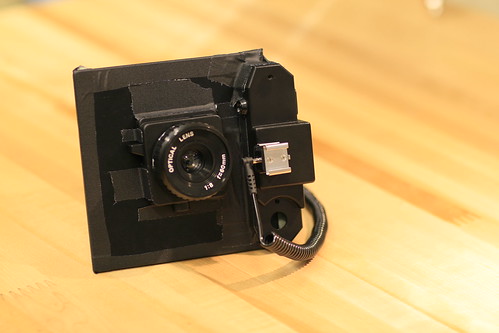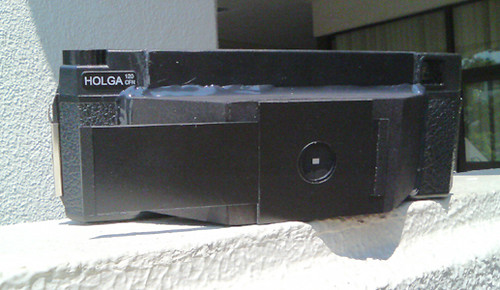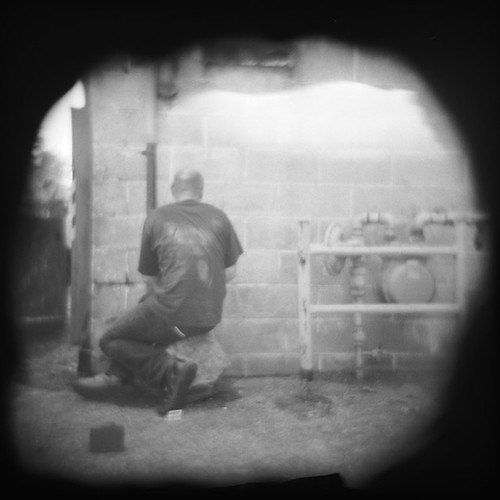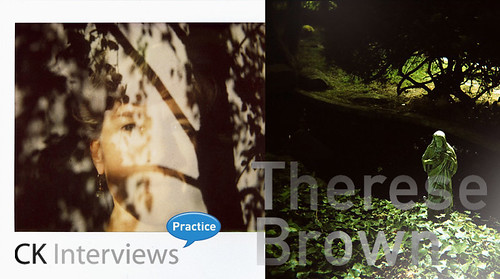Holga-Cam of the Apocalypse by RoFi Mike.
Made without any cutting, the “Holga-Cam of the Apocalypse” is the product of my love for low-tech experimentation and obsession with cutting edge technology. There are more descriptions and photos of the camera itself in this set, and photos from the camera in the Holgapocalyptiphotos set.
The camera is built from:
1 – Holga 120N camera body (retail: $25)
1 – Phase One P25 Digital Back (retail: $24,000)
1 – Horseman lens board (thus the current name)
1 – Foot of Black Gaff Tape…
You may ask yourself “why?” That is the wrong thing to ask.
Pictures taken with the camera are here.
Tag: holga
2 new Holga converter lenses & fisheye viewfinder
Holga just officially released two plastic lenses that attach over the existing Holga lens to change the focal length
The two tele-converter lenses, models HT-25 (tele lens) and HW-05(wide lens) fit onto you holga and either lengthen(HT-25) or shorten (HW-05) the focal length, therefore creating a tele or wide lens.
Another new release is a fisheye viewfinder that sits on top of your holga enabling you to see the subject ‘fisheyed’ before taking the photo. This viewfinder is a companion piece to the holga fisheye lens.
More info at Holgablog
Holga 120N toy cameras on sale for US $20 at Adorama
On sale for $19.99, usual price $27.99. Go get some.
As usual, if you want one pimped out for you, go to Holgamods.
Camera review: Holga 120 WPC
Check out this review of the Holga WPC (Wide Pinhole Camera) at HolgaBlog.
Related: Holga WPC group on Flickr
Official Holga web site & interview
The company that makes Holgas, Universal Electronics, finally launched an official web site, holgainspire.com.
holgablog "managed to grab an interview with Christine So, Public Relations Co-ordinator at Holga Inspire to find out the background to the new venture, and finally lift the mask on a company that has kept out of the limelight for so long…"
Read the interview at holgablog
Holga closeup filter chart
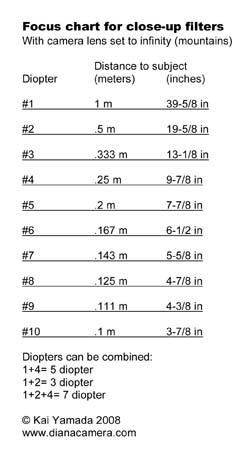
Thanks, Kai Yamada!
Homemade 6×17 stretch Pinholga
Shikihan made this insane 6×17 "Limousine" pinhole camera out of a Holga! You can see two test shots made with it in Tokyo here and here on Flickr.
She’s made a bunch of other cool pinhole cameras (and makes great photos with them), check them out!
Tin-foil-lined Holga
Ever wonder what happens when you line a Holga with aluminum foil? Me too!
I crinkled the crap out of it to hopefully get lots of light bouncing around in different directions, and lined the camera, shiny side out. The irregular vignette is because I wasn’t very careful about leaving the edges of the light path clear.
I expected the lowered contrast, but was thinking I might get some random specular-type highlights. Nope. Of the whole roll, this is the only frame that had a visible artifact (the white wavy form near the top). But this does show that you can easily control the shape of your vignette, just take the back off and put some crap around the square hole you can see the shutter through.
If you care, this is Kodak T-Max 100 developed in Diafine.
How to fix a Holga’s corner double exposure issue
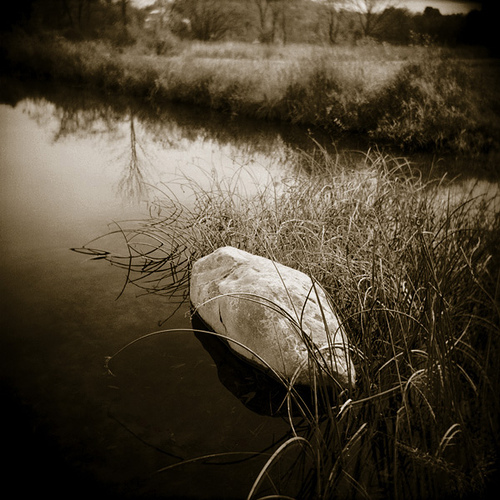
There is a fairly common shutter issue with Holga toy cameras that creates a slight double exposure in the bottom right corner of the frame (see above).
See what causes it and find out how to fix it at Squarefrog’s excellent Holga resource site, Holgas Online.
Interview with Therese Brown
Chris Keeney talks to pinhole/Holga/Polaroid experimental photographer Therese Brown as part of his excellent ongoing series of interviews with fine art photographers.
You can see Brown’s work at her Web site, ThisIsWhatISee.com as well as on Flickr.
This one’s a must-read, so do it at ChrisKeeney.com.
